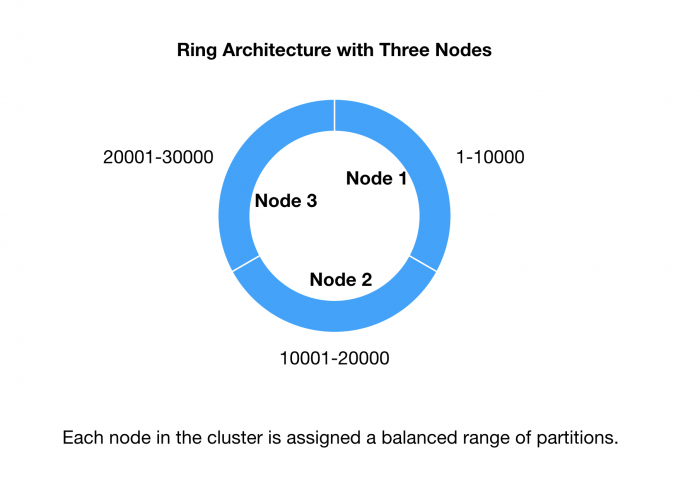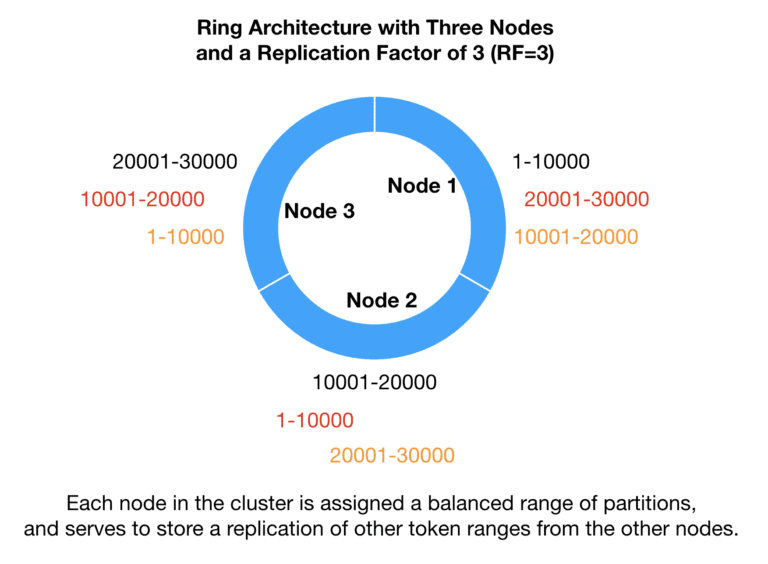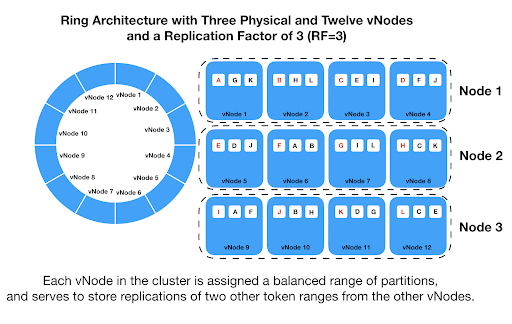An Apache Cassandra database consists of open source software running on one or more physical or virtual computer servers known as a Cassandra cluster. It also refers to data stored within the database in the formats and accessed over the Internet via query languages and methodologies specified by the Apache Cassandra project. There is an active Apache Cassandra community where users discuss usage and latest developments.
History of the Cassandra Database
Cassandra was born out of the need for a massive, globally-distributed, always-on, highly available database that could scale to the size of modern web applications and social media. Avinash Lakshman, who was co-inventor of Amazon’s Dynamo database collaborated with Prashant Malik to develop the initial internal database, which was first announced to the world in the 2009 Cassandra whitepaper. White it drew from many of Dynamo’s design principles, Cassandra also adopted other features similar to Google’s 2006 Bigtable whitepaper.
Cassandra was designed to handle the “Inbox Search” problem for Facebook. This equated to a system capable of “very high write throughput, billions of writes per day, and also scale with the number of users.” This last number had grown from 1 million Facebook users in 2004 to 100 million users by the time the system went live in June 2008, to over 250 million by the time the Cassandra whitepaper was published in 2009.
Eventually, Facebook replaced Cassandra with HBase, another NoSQL database, for their Inbox Search project, but they continue to use Cassandra in their Instagram division, which supports over 1 billion monthly active users.
While the Bigtable and Dynamo papers were made public, the databases themselves remained behind closed doors at Google and Amazon. Facebook took a different approach. Not only did they publish their whitepaper, they also made its source code publicly available under the auspices of the Apache Software Foundation (apache.org). It was accepted as an incubator project in January of 2009, and graduated the following year in February 2010.
During that period of early adoption, developers such as Rackspace’s Johnathan Ellis and others began to contribute to the project making it a community-led open source software effort (Ellis later became the Apache Cassandra Chair and a co-founder of DataStax).
By the time the Apache Cassandra project had reached the 1.0 release milestone, it had already seen rapid adoption by companies beyond Facebook such as Cisco, Digg, Rackspace, Reddit, Twitter, and elsewhere. By 2012, there were over 1,000 production deployments of the Cassandra database, including by such companies as eBay, Disney, and Netflix.
Since then, the Apache Cassandra project has been upgraded with maintenance releases on a regular basis. Various features have been improved or added over the years. One controversial decision made during its evolution was the adoption of a “Tick-Tock” model for releases starting in 2015. During this period, coinciding with Cassandra 3.0, even-numbered maintenance releases were designated for new features and bug fixes, and odd-numbered releases were to ensure code stability. However, this release model was broadly rejected, and the scheme abandoned in 2017, coinciding with Cassandra 3.10.
As of 2021, Cassandra has risen to one of the top ten most broadly accepted database solutions in the world, as per the DB-Engines.com ranking.
Apache Cassandra Release History
Apache Cassandra Versions:
1.0 – October 2011 – Performance improvements, compression, hinted handoffs
2.0 – September 2013 – Lightweight transactions based on the Paxos consensus protocol
3.0 – November 2015 – Added Materialized Views (later made experimental); adopted (then later abandoned) the “tick-tock” model for release.
4.0 – July 2021 – Zero-copy streaming, Java 11 support, incremental repairs




